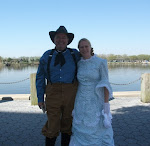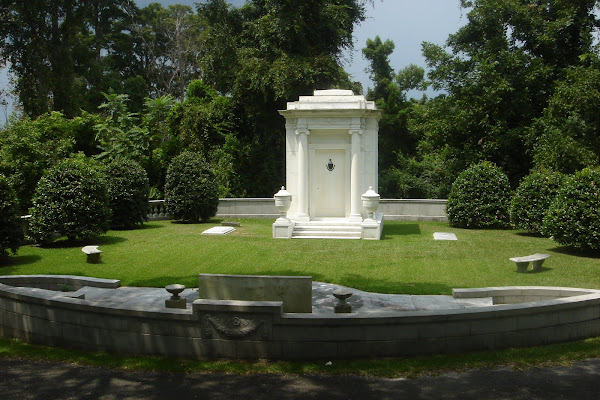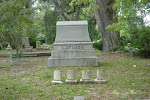e mail us @ lori.touroldwilmington@gmail.com
History Walking Tours

Open Year Round
3rd Graders on Tour!

History Walking Tour for all ages!
The Wilmington Campaign
While most aspects of the American Civil War have been examined in minute detail by an infinite body of historians, journalists, novelists, and writers in general, it actually is possible for a probing historian to break new ground while examining an important campaign of that great American tragedy. Chris E. Fonvielle, Jr., has accomplished this with his handsome volume on the Wilmington Campaign. Fonvielle has not simply duplicated other recent studies that focused on the more celebrated battles of the campaign. He has methodically reported and analyzed the campaign in its entirety by providing a full portrait of the war on North Carolina's southeastern coast. His study includes an examination of the background and importance of Wilmington and the Cape Fear River to the Confederate war effort, the construction and strength of the formidable Cape Fear fortifications, the two attacks on Fort Fisher, and the subsequent march on Wilmington.
As the war progressed, the river port of Wilmington took on increasing strategic importance to the Confederacy. Located thirty miles up the Cape Fear River, it had the unique geographic advantage of occupying a river that was perfectly suited to blockade-running. Frying Pan Shoals separated the river's two inlets, and the Union blockading fleet found it virtually impossible to blanket the sixty miles of coast between the inlets and prevent the continuous ocean traffic that went in and out of the city. By 1864, Wilmington had constituted the only major Confederate port remaining open to the outside world, and its railroad facilities transported the arms and provisions necessary to maintain Robert E. Lee's army.
During the war, blockade-runners made more than 400 trips into Cape Fear, bringing in some $65 million in supplies. In addition to clothing and other civilian merchandise, vast quantities of arms, munitions, uniforms, and other military supplies destined for Lee's army made their way northward through the port of Wilmington. In an effort to protect Cape Fear, a series of massive earthen forts was designed to guard the inlets and the river approaches to Wilmington. Fort Fisher extended along the coast from New Inlet north for 1,300 yards before projecting west for 480 yards toward the Cape Fear River to form a giant "7." It was the region's most formidable installation and became generally known as the "Gibraltar of the South."
Confederate authorities deemed the massive earthen fort impregnable, and one Union general proclaimed it to be the strongest fort he ever encountered. In an effort to close this last gateway to the outside world, Federal authorities late in 1864 ordered the capture of Cape Fear. A Union assault on December 24, 1864, featured an unusual effort to destroy the fort by exploding a ship loaded with 215 tons of gunpowder in the shallow adjacent waters. The powder ship made no impression on the Confederate defenders, and the subsequent naval bombardment and land invasion failed to accomplish its goal. The Federals' poor showing was partly due to the personal animosity between the Union naval and army commanders, Rear Admiral David Dixon Porter and Major General Benjamin F. Butler. After the failed expedition returned to Virginia, Ulysses S. Grant became convinced that occupying Wilmington was critical to the Union strategy to end the war. With Grant's orders before them, Porter, with fifty-eight warships, and Major General Alfred H. Terry, in command of 9,000 soldiers, returned to Cape Fear on January 13, 1865. The resulting battle for Fort Fisher has been described as the greatest naval-land battle in the history of the world up to that point. More than 1,464 tons of metal was fired at the fort, and Union losses approached 1,450 killed, wounded, and missing. The pathetically small Confederate defensive force of 1,900 men under the command of Colonel William Lamb and Major General William Henry Chase Whiting fought valiantly against overwhelming odds before being completely overwhelmed in hand-to-hand combat on January 15. Southern losses totaled about 500 men killed and wounded. The remaining 1,400 were captured. The tragedy in the loss of Fort Fisher lay in the inexplicable behavior of Confederate General Braxton Bragg, commander of the Wilmington District, and his subordinate Major General Robert F. Hoke. They commanded a division of veteran troops at Sugar Loaf, not more than five miles from the fort, yet Bragg chose to sacrifice Fort Fisher rather than send reinforcements to support its defenders. After the fort fell, Bragg ordered his troops to withdraw from the remaining fortifications guarding the mouth of Cape Fear to installations closer to Wilmington. It took more than a month for the Union army to push the Confederates back into the streets of Wilmington. Two brigades of U.S. Colored Troops that had participated in both the attacks on Fort Fisher, acquitted themselves well in the Wilmington invasion. On February 22, Bragg ordered a complete withdrawal from Wilmington, and the Union army captured the city.
With the occupation of North Carolina's largest city and the closing of Cape Fear to foreign commerce, the fate of the Confederacy was sealed. Lee had warned Bragg that without the port of Wilmington, he could not sustain his army in the field. Less than seven weeks after the fall of Wilmington, Lee's Army of Northern Virginia surrendered at Appomattox Court House.
The Wilmington Campaign is thoroughly researched, well written, and accessible. It features a vast array of excellent photographs and maps, many of which were previously unpublished, along with a serviceable index, notes, and a full bibliography. Fonvielle takes great care to develop his characters and provide insight into the officers and men involved in the engagements. He includes unique vignettes, such as an incident in which a colored soldier captured his former master and brought him into camp at gunpoint. He also relates a well-documented account of a Union soldier who stopped at his boyhood home to greet his mother during the approach to Wilmington only to find that his "Johnny Reb" brother had visited there hours earlier as his Confederate unit retreated toward Wilmington. For Civil War scholars particularly interested in a complete identification of the units involved and their commanders, along with the ships, their guns, and their commanding officers, the orders of battle are included as a form of appendix. The text is replete with the details of battle, the type of weapons used by each participant, and the strategy (or the lack thereof) of the commanding officers.With all this detail, the narrative reads well. This volume is highly recommended to anyone with an interest in the Civil War, North Carolina history, or really any good, historically accurate story.DonaldR.Lennon East Carolina UniversityBook Review: The Wilmington Campaign: Last Rays of Departing Hope (James R. Arnold and Roberta Wiener) : AH Originally published by American History magazine. Published Online: August 11, 2001 The Wilmington Campaign: Last Rays of Departing Hope, by Chris E. Fonvielle, Jr., Savas Publishing, Campbell, California, (800) 848-6585, 623 pages, $32.95. Posted by Tour Old Wilmington at 2:44 PM Labels: Boats on the Cape Fear River, civil war, education, fort fisher, haunted cotton exchange, history walking tours, north carolina, things to do in Wilmington tour old wilmington, tour old wilmington Location: State Historic Site, 1610 S Fort Fisher Blvd, Kure Beach, NC 28449, USA
As the war progressed, the river port of Wilmington took on increasing strategic importance to the Confederacy. Located thirty miles up the Cape Fear River, it had the unique geographic advantage of occupying a river that was perfectly suited to blockade-running. Frying Pan Shoals separated the river's two inlets, and the Union blockading fleet found it virtually impossible to blanket the sixty miles of coast between the inlets and prevent the continuous ocean traffic that went in and out of the city. By 1864, Wilmington had constituted the only major Confederate port remaining open to the outside world, and its railroad facilities transported the arms and provisions necessary to maintain Robert E. Lee's army.
During the war, blockade-runners made more than 400 trips into Cape Fear, bringing in some $65 million in supplies. In addition to clothing and other civilian merchandise, vast quantities of arms, munitions, uniforms, and other military supplies destined for Lee's army made their way northward through the port of Wilmington. In an effort to protect Cape Fear, a series of massive earthen forts was designed to guard the inlets and the river approaches to Wilmington. Fort Fisher extended along the coast from New Inlet north for 1,300 yards before projecting west for 480 yards toward the Cape Fear River to form a giant "7." It was the region's most formidable installation and became generally known as the "Gibraltar of the South."
Confederate authorities deemed the massive earthen fort impregnable, and one Union general proclaimed it to be the strongest fort he ever encountered. In an effort to close this last gateway to the outside world, Federal authorities late in 1864 ordered the capture of Cape Fear. A Union assault on December 24, 1864, featured an unusual effort to destroy the fort by exploding a ship loaded with 215 tons of gunpowder in the shallow adjacent waters. The powder ship made no impression on the Confederate defenders, and the subsequent naval bombardment and land invasion failed to accomplish its goal. The Federals' poor showing was partly due to the personal animosity between the Union naval and army commanders, Rear Admiral David Dixon Porter and Major General Benjamin F. Butler. After the failed expedition returned to Virginia, Ulysses S. Grant became convinced that occupying Wilmington was critical to the Union strategy to end the war. With Grant's orders before them, Porter, with fifty-eight warships, and Major General Alfred H. Terry, in command of 9,000 soldiers, returned to Cape Fear on January 13, 1865. The resulting battle for Fort Fisher has been described as the greatest naval-land battle in the history of the world up to that point. More than 1,464 tons of metal was fired at the fort, and Union losses approached 1,450 killed, wounded, and missing. The pathetically small Confederate defensive force of 1,900 men under the command of Colonel William Lamb and Major General William Henry Chase Whiting fought valiantly against overwhelming odds before being completely overwhelmed in hand-to-hand combat on January 15. Southern losses totaled about 500 men killed and wounded. The remaining 1,400 were captured. The tragedy in the loss of Fort Fisher lay in the inexplicable behavior of Confederate General Braxton Bragg, commander of the Wilmington District, and his subordinate Major General Robert F. Hoke. They commanded a division of veteran troops at Sugar Loaf, not more than five miles from the fort, yet Bragg chose to sacrifice Fort Fisher rather than send reinforcements to support its defenders. After the fort fell, Bragg ordered his troops to withdraw from the remaining fortifications guarding the mouth of Cape Fear to installations closer to Wilmington. It took more than a month for the Union army to push the Confederates back into the streets of Wilmington. Two brigades of U.S. Colored Troops that had participated in both the attacks on Fort Fisher, acquitted themselves well in the Wilmington invasion. On February 22, Bragg ordered a complete withdrawal from Wilmington, and the Union army captured the city.
With the occupation of North Carolina's largest city and the closing of Cape Fear to foreign commerce, the fate of the Confederacy was sealed. Lee had warned Bragg that without the port of Wilmington, he could not sustain his army in the field. Less than seven weeks after the fall of Wilmington, Lee's Army of Northern Virginia surrendered at Appomattox Court House.
The Wilmington Campaign is thoroughly researched, well written, and accessible. It features a vast array of excellent photographs and maps, many of which were previously unpublished, along with a serviceable index, notes, and a full bibliography. Fonvielle takes great care to develop his characters and provide insight into the officers and men involved in the engagements. He includes unique vignettes, such as an incident in which a colored soldier captured his former master and brought him into camp at gunpoint. He also relates a well-documented account of a Union soldier who stopped at his boyhood home to greet his mother during the approach to Wilmington only to find that his "Johnny Reb" brother had visited there hours earlier as his Confederate unit retreated toward Wilmington. For Civil War scholars particularly interested in a complete identification of the units involved and their commanders, along with the ships, their guns, and their commanding officers, the orders of battle are included as a form of appendix. The text is replete with the details of battle, the type of weapons used by each participant, and the strategy (or the lack thereof) of the commanding officers.With all this detail, the narrative reads well. This volume is highly recommended to anyone with an interest in the Civil War, North Carolina history, or really any good, historically accurate story.DonaldR.Lennon East Carolina UniversityBook Review: The Wilmington Campaign: Last Rays of Departing Hope (James R. Arnold and Roberta Wiener) : AH Originally published by American History magazine. Published Online: August 11, 2001 The Wilmington Campaign: Last Rays of Departing Hope, by Chris E. Fonvielle, Jr., Savas Publishing, Campbell, California, (800) 848-6585, 623 pages, $32.95. Posted by Tour Old Wilmington at 2:44 PM Labels: Boats on the Cape Fear River, civil war, education, fort fisher, haunted cotton exchange, history walking tours, north carolina, things to do in Wilmington tour old wilmington, tour old wilmington Location: State Historic Site, 1610 S Fort Fisher Blvd, Kure Beach, NC 28449, USA























